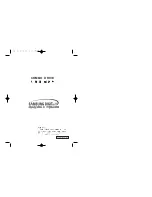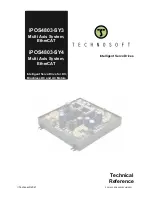
1
Quattro™ Startup guide
1. Prior to applying any voltage to the drive complete the following steps.
2. Record the following motor data;
a. Rated Motor Volts, Amps, Field amps forcing, Field amps running
b. Rated motor RPM, Rated encoder PPR, Elevator speed (ft/min, m/sec, mm/sec)
c. If using a friction wheel, find the ratio between wheel and the surface it is riding on
3. Disconnect the motor armature wires and the field wires from the drive;
a. Using a megger at 500 – 1000V, a good reading is 2Mohms or larger.
i. Armature
1. Check A1 to ground
2. Check A2 to ground
3. If a breakdown is detected this
must
be addressed before
proceeding.
ii. Field
1. Check F1 to ground
2. Check F2 to ground
3. If a breakdown is detected this
must
be addressed before
proceeding.
iii. Armature - Field
1. Check A1 /2 to F1 / 2
2. If a breakdown is detected this must be addressed before proceeding.
b. Measure the total field resistance (F1 – F2) with a DVOM, record this number.
c. Measure the resistance of each individual field coil.
d. Perform an AC drop test on the field coils.
i. Apply 120 / 240VAC to F1 and F2, measure the AC voltage on each coil.
1. These numbers should be similar for each coil.
4. Is Quattro configured with the standard field module or the alternate low voltage version?
a. High voltage module generates motor field current from 1 – 40A. This module will
work for all cases and has no additional switches or jumpers to set.
b. Low voltage module is design for to separate ranges; 1- 20A and 20 -40A. The
hardware requires two separate hardware setups to set the range. This module can
be identified by the addition of a transformer plugged in at location J3, for the low
range this must be located in the ‘A’ position and the high range would be the ‘B’. In
addition JP1 jumper must be installed in the ‘A’ location for low and ‘B’ for the high
range.
If using the low voltage supply, this quick check should be completed to verify it will work on
this specific motor;
Calculate both
Vbus
(DC bus voltage) and
Vf
(voltage required on the motor field to reach full
field amps).
Vbus
= (Vin x SQRT 2) + DC Bus Voltage Boost (A5), where Vin is the three phase AC
voltage applied to the Quattro, if an auto-transformer is used then this would be measured at
the secondary, SQRT 2 = 1.41, DC Bus Voltage Boost (A5) is defaulted to 30 and has the
range of 15 – 75.
Vf =
Full FLD Current (A6) x Field resistance, where the Full FLD Current is the maximum DC
current which will be applied to the motor fields, field resistance is obtained by disconnecting
the motor field wires at TB3 – 1 and TB3 -2 and measuring the resistance. A typical number
for this would be 5 – 100 ohms.
These are the two condition which are being tested;
Содержание Quattro DC
Страница 145: ...Appendix Dimensions and Weights 143 Figure 23 Dimensions without optional Customer I O Panel no Top Hat...
Страница 146: ...Appendix Dimensions and Weights 144 Figure 24 Dimensions with optional Customer I O Panel no Top Hat...
Страница 147: ...Appendix Dimensions and Weights 145 Figure 25 Dimensions without optional Customer I O Panel includes Top Hat...
Страница 148: ...Appendix Dimensions and Weights 146 Figure 26 Dimensions with optional Customer I O Panel includes Top Hat...
Страница 160: ...Appendix Input Voltage Requirements 158 Figure 39 200A Application Guide Figure 40 250A Application Guide...
Страница 161: ...Appendix Input Voltage Requirements 159 Figure 41 300A Application Guide...
Страница 177: ......




































